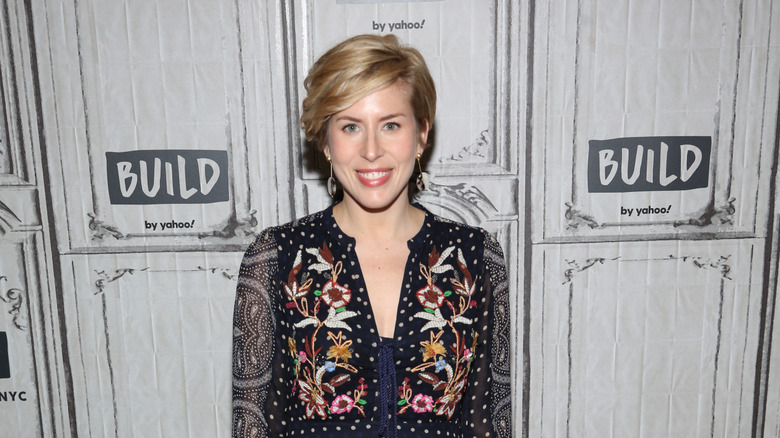How HGTV's Erin Napier Keeps Her Green Thumb Active During Winter
We may receive a commission on purchases made from links.
While winter is known as a season to slow down and curl up indoors, avid gardeners are showing off their winter harvests. Erin and Ben Napier, known for their home renovation skills on HGTV's "Home Town," are giving us FOMO with their recent posts on Instagram of freshly picked vegetables. With images of cabbage the size of Ben's torso, broccoli that eclipses their child's head, and a New Year's Day harvest of mustard greens, carrots, and spinach, it's hard not to be jealous. To keep her green thumb active during the winter, Erin meticulously times the planting of certain vegetables just right (typically in late summer), so that they are at a harvestable size when colder temps hit.
The concept of winter gardening is sort of a misnomer, implying that plants go into the ground during the cold season. However, that's not the case, since all plants stop actively growing in the winter. Instead, seeds are sown indoors and veggie starts go into the ground in the late summer or early fall, typically about eight weeks before the anticipated first frost. This gives them ample time to grow before daylight wanes and temps drop. What you put in the ground during this time will give you a harvest that begins in the fall and lasts through winter. Once the first frost arrives, hoop houses, cold frames, and other protective garden structures then serve as storage until you're ready to pick your vegetables.
Setting up your winter garden
As Erin mentioned on Instagram, her fall and winter garden is successful thanks to a planting calendar, because timing is everything. She uses one by garden consultant Emily Grohovsky (@cedarhillgardenconsulting on Instagram), which provides key region-specific planting dates, gardening tips, and reminders. Free online resources like the Old Farmer's Almanac and National Gardening Association also offer important dates. Gardeners can input their city or zip code to receive the calendar specific to their location.
Remember that extreme winter temperatures mean you need extra protection for your vegetables while you wait to harvest them. Common solutions include cold frames or hoop houses around garden beds. These structures — which are simple to DIY — protect plants from the cold while still giving them light. Frost blankets, like the Homoda Plant Covers Freeze Protection, are perfect for protecting rows of vegetables.
If you don't already have a spot for your vegetables, winter might be the best time to build garden beds because of the lower cost and increased availability of materials. Plus, you'll be getting a head start for the spring while most gardeners are just emerging from the winter. This season also is a good time to clean and disinfect your gardening tools. And if you're feeling ambitious, follow these tips and tricks for winter seed sowing to get a head start on your spring garden.
